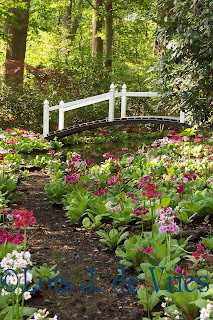Gardening as Process: Editing
 Over time, we change, our taste changes, the availability of various plants changes, the amount of time we want to spend in the garden changes and, most telling, our capabilities to manage the physical tasks of gardening changes. What this means to every gardener is that the garden should be periodically edited.
Over time, we change, our taste changes, the availability of various plants changes, the amount of time we want to spend in the garden changes and, most telling, our capabilities to manage the physical tasks of gardening changes. What this means to every gardener is that the garden should be periodically edited.When? When it no longer functions as intended, when the flower beds have grown too shady, when the kids no longer use the sandbox or swing set, when the swimming pool lies idle 99% of the time, when the garden no longer gives you the pleasure it once did. And, sadly, when we can no longer maintain what we have.
Edit your garden to suit your lifestyle and your budget. As with everything in life, gardening happiness is directly proportional to the difference between our expectations and our ability to achieve them. If you can only afford a $2,000 per year gardening budget, it’s unrealistic to hope that you’ll have a $100,000 landscape at the end of your five- year plan. Better to have a lush bed of pachysandra sparked by containers of colorful annuals than acres of mulch beds with scraggly trees, shrubs, and perennials.
In design terms, editing usually means taking something out, but it can also mean moving things around, so that the overall design flows more smoothly. This can apply to hardscape, garden ornaments, activity areas, and plants.
Think about the best use of your various garden spaces right now. Then start editing to bring that vision closer to reality.

